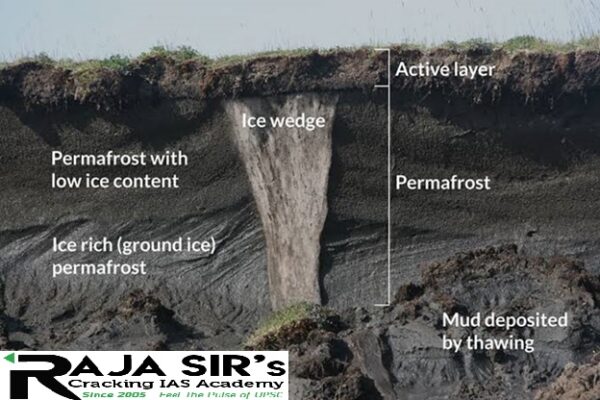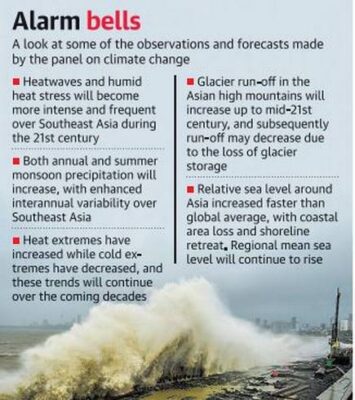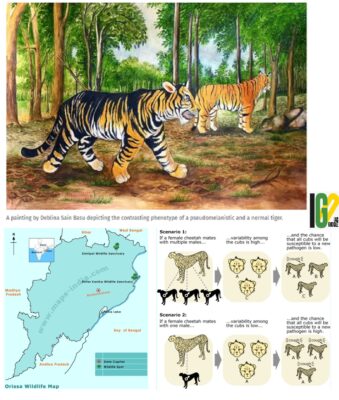- Home
- Prelims
- Mains
- Current Affairs
- Study Materials
- Test Series
21st Sep 2021
RBI ANNOUNCES OPENING OF THIRD COHORT UNDER REGULATORY SANDBOX
The Reserve Bank of India announced the opening of the third cohort under the Regulatory Sandbox.




- The application for the third cohort may be submitted from October 1 to November 14, 2021.
- Theme for the third cohort is MSME lending.
- RBI also selected eight entities for the ‘test phase’ of the second cohort on cross border payments.
- Six entities have already completed the ‘test phase’ of the first cohort on retail payments.
- The products were evaluated based on mutually agreed test scenarios and expected outcomes.
- The products found acceptable under this cohort may be considered for adoption by regulated entities subject to compliance with applicable regulatory requirements.

- A regulatory sandbox (RS) usually refers to live testing of new products or services in a controlled/test regulatory environment for which regulators may (or may not) permit certain regulatory relaxations for the limited purpose of the testing.
- The RS allows the regulator, the innovators, the financial service providers (as potential deployers of the technology) and the customers (as final users) to conduct field tests to collect evidence on the benefits and risks of new financial innovations, while carefully monitoring and containing their risks.
- It can provide a structured avenue for the regulator to engage with the ecosystem and to develop innovation-enabling or innovation-responsive regulations that facilitate delivery of relevant, low-cost financial products.
- The RS is potentially an important tool which enables more dynamic, evidence-based regulatory environments which learn from, and evolve with, emerging technologies.
- The proposed financial service to be launched under the RS should include new or emerging technology, or use of existing technology in an innovative way and should address a problem, or bring benefits to consumers.s
- Provides an environment to innovative technology-led entities for limited-scale testing of a new product or service that may or may not involve some relaxation in a regulatory requirement before a wider-scale launch.
- The RS is, at its core, a formal regulatory programme for market participants to test new products, services or business models with customers in a live environment, subject to certain safeguards and oversight.
- It fosters ‘learning by doing’ on all sides. Regulators obtain first-hand empirical evidence on the benefits and risks of emerging technologies and their implications, enabling them to take a considered view on the regulatory changes.
- Users of an RS can test the product’s viability without the need for a larger and more expensive roll-out.
- The RS can go a long way in not only improving the pace of innovation and technology absorption but also in financial inclusion and in improving financial reach.
- The dependence of the regulator on industry/stakeholder consultations is correspondingly reduced by providing a structured and institutionalized environment for evidence-based regulatory decision-making.
- RS could lead to better outcomes for consumers through an increased range of products and services, reduced costs and improved access to financial services.
- Innovators may lose some flexibility and time in going through the RS process.
- Running the sandbox program in a time-bound manner at each of its stages can mitigate this risk.
- Case-by-case bespoke authorizations and regulatory relaxations can involve time and discretional judgements.
- May be addressed by handling applications in a transparent manner and following well-defined principles in decision-making.
- The RBI or its RS cannot provide any legal waivers.
- Post-sandbox testing, a successful experimenter may still require regulatory approvals before the product/services/technology can be permitted for wider application.
- Regulators can potentially face some legal issues, such as those relating to consumer losses in case of failed experimentation or from competitors who are outside the RS, especially those whose applications have been/may be rejected.
- The target applicants for entry to the RS are FinTech firms which meet the eligibility conditions prescribed for start-ups by the government.
- RS will encourage innovations where:
- There is absence of governing regulations;
- There is a need to temporarily ease regulations for enabling the proposed innovation;
- The proposed innovation shows promise of easing/effecting delivery of financial services in a significant way.
- The thawing of the ground is expected to release greenhouse gases like methane and carbon dioxide.

- Defined as ground (soil, rock and any included ice or organic material) that remains at or below zero degree Celsius for at least two consecutive years.
- It is spread across an area of over 23 million square kilometres, covering about 15% of the land area of the globe.
- It would affect countries where roads or buildings were constructed on permafrost. Ex: The Russian railways.
- If the permafrost begins to thaw, organic material will become available for microbiota to break down.
- The biota will release carbon dioxide and methane (about 25 to 30 times more potent than carbon dioxide).
- The total quantity of carbon buried in the permafrost is estimated at about 1500 billion tonnes and the top three meters of the ground has about 1000 billion tonnes.
- The world currently emits approximately 10 billion tonnes of carbon a year into the atmosphere.
- If the permafrost thaws and releases even only 1% of the frozen carbon in any one year, it will exceed industrial emissions.

- There are concerns that the thawing permafrost may release new bacteria or viruses.
- Mammoths were found in the permafrost in Russia recently. When these carcasses begin to degrade again, it may reveal bacteria that were frozen thousands of years ago.
- The environment is so much more suitable than during the Ice Age for evolution or development of viruses and bacteria.

- This is the result of a rare mutation in one gene- Transmembrane Aminopeptidase Q or Taqpep.
- They recessively inherited variants of which are responsible for the marks in domestic cats and king cheetahs.
- The mutation (Taqpep p.H454Y) is likely absent or extremely rare in tigers outside of Similipal.
- With shrinking habitats, the tiger population becomes increasingly isolated. This causes inbreeding, resulting in a lack of genetic variation, and inheriting the mutated gene.
- The primary reasons for prevalence of pseudomelanistic tigers in Odisha are: Population Bottlenecks and founder effects.
- Population bottleneck:
- Population bottlenecks occur when a population's size is reduced for at least one generation.
- Because genetic drift acts more quickly to reduce genetic variation in small populations, undergoing a bottleneck can reduce a population's genetic variation by a lot.
- This population may not be able to adapt to new selection pressures, such as climatic change or a shift in available resources.
- This is because, due to reduced genetic variation that selection would act on may have already drifted out of the population.
- Founder effects
- A founder effect occurs when a new colony is started by a few members of the original population.
- This small population size means that the colony may have:
- reduced genetic variation from the original population.
- a non-random sample of the genes in the original population.
- Similipal National Park is a national park and a tiger reserve in the Mayurbhanj district in Odisha.
- It is part of the Mayurbhanj Elephant Reserve, which includes three protected areas — Similipal Tiger Reserve, Hadgarh Wildlife Sanctuary and Kuldiha Wildlife Sanctuary.
- It derives its name from the abundance of red silk cotton trees (simal tree) growing in the area. It is the 7th largest National Park in India.
- Fauna: Bengal tiger, Asian elephant, gaur, and chausingha
- It hosts beautiful waterfalls like Joranda and Barehipani Falls.
- This protected area is part of the UNESCO World Network of Biosphere Reserves since 2009.
- The impacts of slow-onset climate change such as water scarcity, decreasing crop productivity and rising sea levels could lead to millions of "climate migrants" by 2050.
- Migration hot spots could appear within the next decade and intensify by 2050.
- North Africa, is predicted to have the largest proportion of climate migrants.
- Accounting to 19 million, due to increased water scarcity in northeastern Tunisia, northwestern Algeria, western and southern Morocco.
- The report examined how the impacts of slow-onset climate change such as water scarcity, decreasing crop productivity and rising sea levels could lead to "climate migrants" by 2050 under three different scenarios. These scenarios are:
- Pessimistic Scenario:
- With a high level of emissions and unequal development, up to 216 million people will move within their own countries across the six regions.
- These regions are Latin America; North Africa; Sub-Saharan Africa; Eastern Europe and Central Asia; South Asia; and East Asia and the Pacific.
- In South Asia, Bangladesh is particularly affected by flooding and crop failures, leading to half of the predicted climate migrants.
- Around 19.9 million people, including an increasing number of women, moving by 2050.
- Climate-friendly Scenario:
- With a low level of emissions and inclusive, sustainable development, the world could see 44 million people being forced to leave their homes.
- Worst-case Scenario:
- Sub-Saharan Africa - The most vulnerable region due to desertification, and the population's dependence on agriculture - would see the most migrants.
- Up to 86 million people moving within national borders.
- World Bank Group is an international partnership comprising 189 countries and five constituent institutions.
- Established: July 1994
- Headquarters: Washington DC United States
- International Bank for Reconstruction and Development (IBRD):
- It is the world’s largest development bank with a membership of 189 countries.
- It provides loans, guarantees, advisory services, and risk management products to middle-income and creditworthy low-income countries.
- Middle-income countries represent more than 60% of the IBRD’s portfolio.
- Finances investments across all sectors and offers technical support and expertise at every stage of a project.
- It assists governments in augmenting the investment climate of countries, removing service delivery bottlenecks, and strengthening institutions and policies.
- Sources most of its funds from the world’s financial markets.
- International Development Association (IDA):
- IDA is an international financial institution which offers concessional loans and grants to the world's poorest developing countries.
- It was established in 1960 to complement the existing IBRD by lending to developing countries.
- Together, the IDA and IBRD are collectively known as the World Bank.
- International Finance Corporation (IFC):
- IFC is a sister organization of the World Bank.
- It is the largest international development institution focused on the private sector in developing countries.
- It functions as the private sector arm of the WBG.
- It works for economic development by investing in for-profit and commercial projects for poverty reduction and augmenting development.
- It engages in mobilizing third-party resources for the projects.
- Multilateral Investment Guarantee Agency (MIGA):
- Aim: To enhance cross-border investment in developing countries by giving guarantees to lenders and investors.
- The agency’s guarantees to protect investments against non-commercial risks.
- It emphasizes on Fragile and Conflict-affected States.
- Coverage against losses due to war, terrorism, and civil disturbance.
- Coverage against expropriation by governments.
- Protection against losses arising from an inability to legally convert local currency into hard currency.
- Credit enhancement – protection when governments fail to honor financial obligations.
- India became a member of the MIGA in 1994.
- International Centre for Settlement of Investment Disputes (ICSID):
- ICSID engages in international investment dispute settlement.
- It settles disputes between investors and governments.
- It provides for settlement of disputes by arbitration, conciliation, or fact-finding.
- It disseminates information on international law on foreign investment.
- India is not a member of the ICSID because it claims that the ICSID’s functioning and structure are biased towards the developed countries.
- The dialogue is aimed at further strengthen the overall defence and strategic cooperation between the two countries, including in the Indo-Pacific.
- Both sides welcomed the elevation of India-Australia relationship to a Comprehensive Strategic Partnership (CSP) during the Leaders’ Virtual Summit held in June 2020.
- The shared objective of an open, free, prosperous and rules-based Indo-Pacific region was reiterated.
- It is in line with India's increasing engagement in the region through:
- Indo-Pacific Oceans’ Initiative
- Australia's Indo-Pacific approach and Pacific Step-Up.
- It is in line with India's increasing engagement in the region through:
- The Ministers intended to expand cooperation under the 2+2 framework and to meet at least once in every two years to maintain the momentum.
- The next 2+2 Ministerial Dialogue would be held in 2023.
- The launch of the Supply Chain Resilience Initiative by the Trade Ministers of India, Australia and Japan was welcomed.
- It was agreed to continue boosting cooperation in the maritime domain, as encapsulated in the Joint Declaration on a Shared Vision for Maritime Cooperation in the Indo-Pacific, adopted in June 2020.
- Trade Ministers of India, Japan and Australia formally launched Supply Chain Resilience Initiative (SCRI).
- The countries have upgraded their relationship to a Comprehensive Strategic Partnership in 2020.
- The countries have signed multiple defence agreements and co-operate in various multilateral fora.
- Both countries are members of the Quad, Commonwealth, Indian Ocean Rim Association, ASEAN Regional Forum, Asia Pacific Partnership on Climate and Clean Development, and participate in East Asia Summits.
- Australia supports India’s membership in Asia Pacific Economic Cooperation (APEC).
- Mutual Legal Assistance Treaty and Extradition Treaty between India and Australia, which were signed in June 2008.
- A Civil Nuclear Cooperation Agreement was signed in September 2014.
- India was sent oxygen, ventilators and Personal Protective Equipment (PPE) kits by Australia as part of an immediate support package during COVID-19 pandemic.
- The researchers from both countries are working jointly to advance COVID-19 screening and study the future health effects of the virus through projects funded by Australia-India Strategic Research Fund.
- The countries have increased defence cooperation.
- AUSINDEX- Bilateral naval exercise
- AUSTRA HIND- Bilateral exercise with Army
- PITCH BLACK- Multilateral air combat training exercise of Australia
- Malabar Exercise Phase I- Multilateral exercise comprising Quad countries
- CAFMD will provide both countries an opportunity to renew collaborations on climate change.
- It will address the financing aspects and deliver climate finance primarily as grants and concessional finance envisaged under Paris Agreement to strengthen climate action.
- It will strengthen India-US bilateral cooperation on climate and environment.
- India aims to achieve 450 GW of Renewable Energy by 2030.
- India electrified 28.02 million homes in 18 months and achieved universal household electrification.
- It is an international environmental treaty which seeks to reduce atmospheric concentrations of greenhouse gases.
- UNFCCC was signed in 1992 at the United Nations Conference on Environment and Development, also known as the Earth Summit, the Rio Summit.
- There are 197 countries to the convention, meet annually in Conferences of the Parties (COP) to assess progress in dealing with climate change.
- To prevent dangerous anthropogenic interference with the earth’s climate system.
- Annex 1: Industrialized countries and economies in transition.
- Annex 2: Developed countries which pay for the cost of developing countries.
- Annex B: The countries in this category are Annex I countries, who have first or second-round Kyoto greenhouse gas emissions targets.
- Least-developed countries: These countries are given special status under the treaty taking into consideration their limitations adapting to the effects of climate change.
- Non-Annex I: countries that are not listed in Annex I come under the category of low-income developing countries.
- India ratified the UNFCCC in 1993. Since India is a developing country, it is not required to adhere to GHG mitigation commitments because of its relatively smaller emissions.
- India played an active role in taking steps to mitigate climate change, as it is exposed to risks associated with climate change like erratic monsoons and natural calamities like floods, droughts, landslides, etc.
- National Environment Policy, 2006 promotes sustainable development along with respect for ecological constraints and the imperatives of social justice.
- The Government of India launched National Action Plan on Climate Change in 2008.
- At COP 21 (Paris Agreement), India had made various commitments to be achieved by 2030.
- India was instrumental in the formation of the Coalition for Disaster Resilient Infrastructure.









 Latest News
Latest News
 General Studies
General Studies